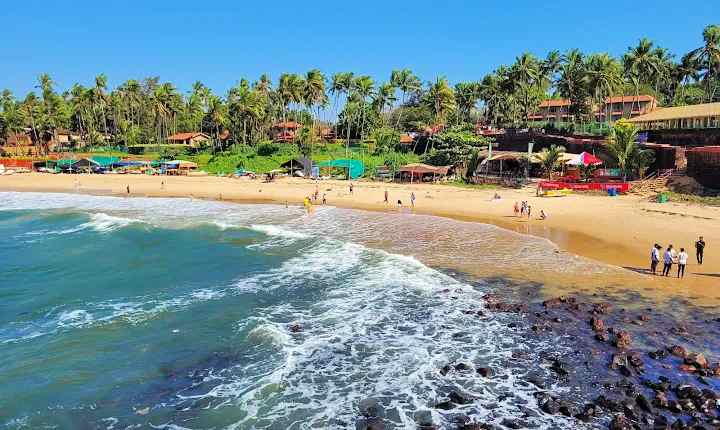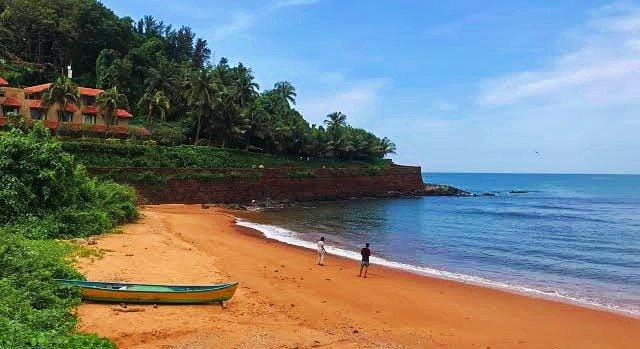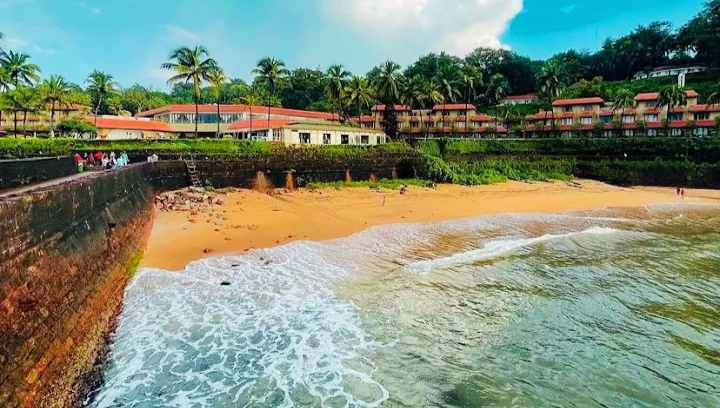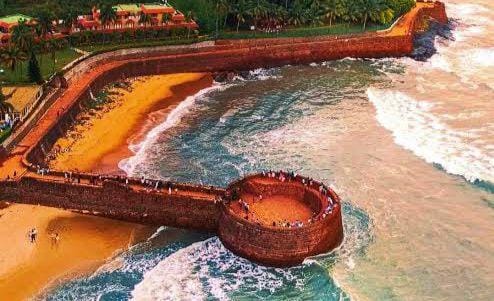
Sinquerim Beach, located in North Goa, is a serene stretch of golden sand, historically significant due to its strategic coastal location and close connection with Fort Aguada. Though now a peaceful tourist destination, its past is rooted in Portuguese colonial defense and trade routes.
1. Portuguese Strategic Coastal Defense
- In the early 17th century, the Portuguese recognized Sinquerim’s importance due to its proximity to the Arabian Sea and key shipping routes.
- The construction of Fort Aguada in 1612, right beside Sinquerim Beach, made this coastline a military stronghold.
- The beach acted as a natural barrier and landing site for vessels, helping to monitor maritime movement and guard against invasions by Dutch and Maratha forces.

2. Old Anchorage Point for Ships
- During the Portuguese era, Sinquerim served as a safe harbor for ships that anchored before proceeding to Old Goa or Lisbon.
- The fort’s freshwater reservoir was used to replenish ships, making the beach a refueling and resupply station for sea-bound journeys.

3. Role in Portuguese Trade & Logistics
- The beach and adjoining coastline facilitated logistical operations involving food, spices, and goods being shipped across the Portuguese empire.
- It supported communication lines between Fort Aguada and Panjim, the Portuguese headquarters in Goa.

4. Tourism Emergence in Modern Times
- In the late 20th century, Sinquerim Beach transformed from a military and maritime hub into a premium beach destination.
- The beach gained popularity due to its clean waters, golden sand, and proximity to luxury hotels like the Taj Fort Aguada Resort.
- Water sports, beach shacks, and historical walking tours now attract visitors worldwide.
Conclusion
Sinquerim Beach is not just a scenic retreat but a historic coastal landmark. It played a crucial role in Portuguese military and maritime strategy in Goa and has now evolved into a serene beach loved for both its natural beauty and heritage value. Visitors enjoy not only its pristine coastline but also a sense of the historical past that still lingers in its sands and surroundings.








Add comment